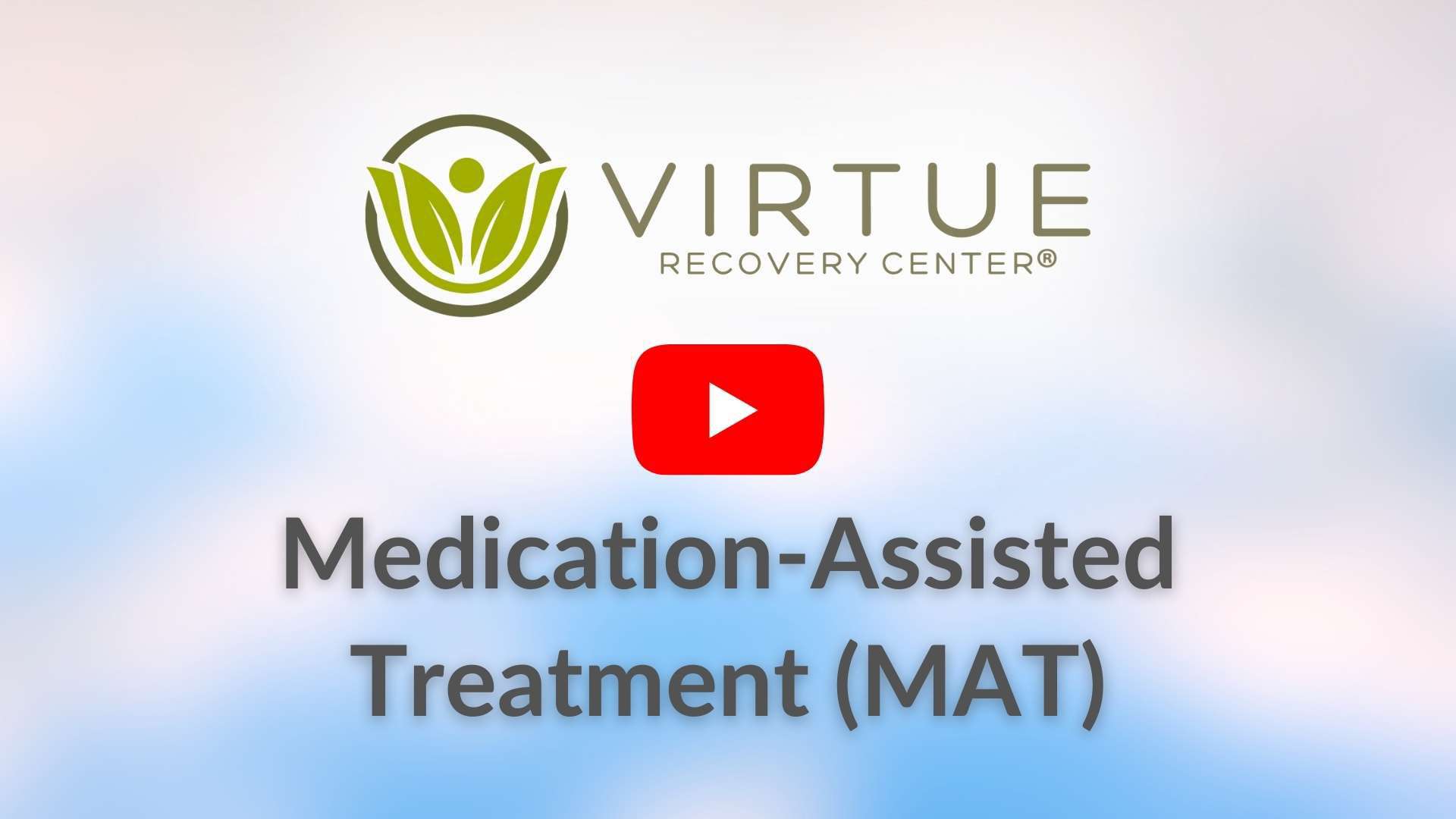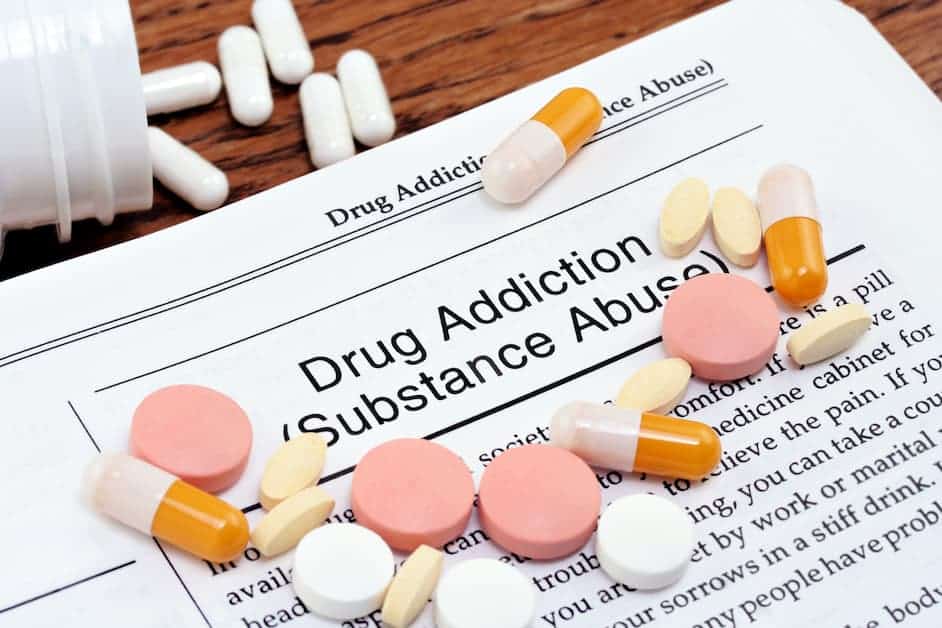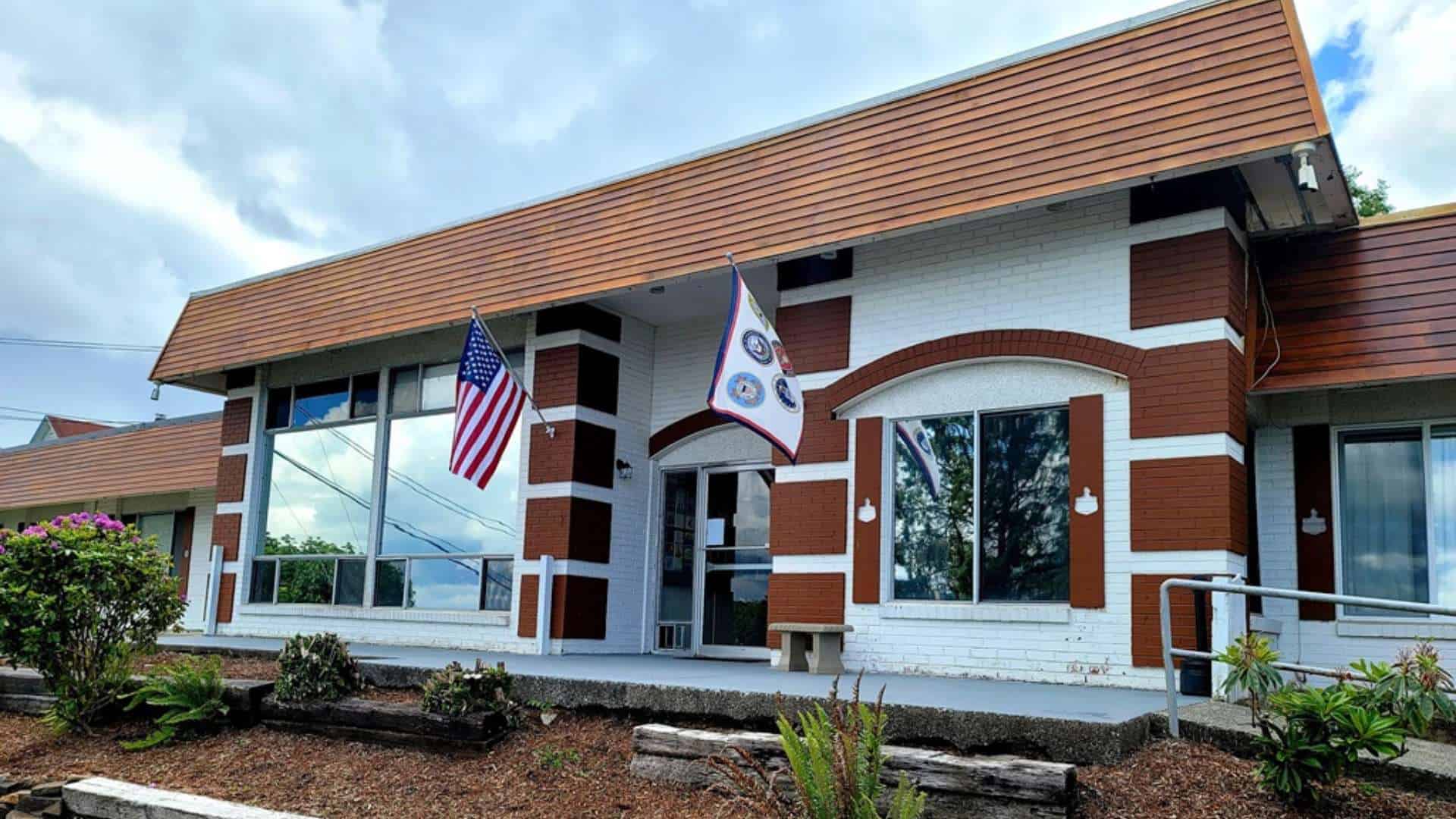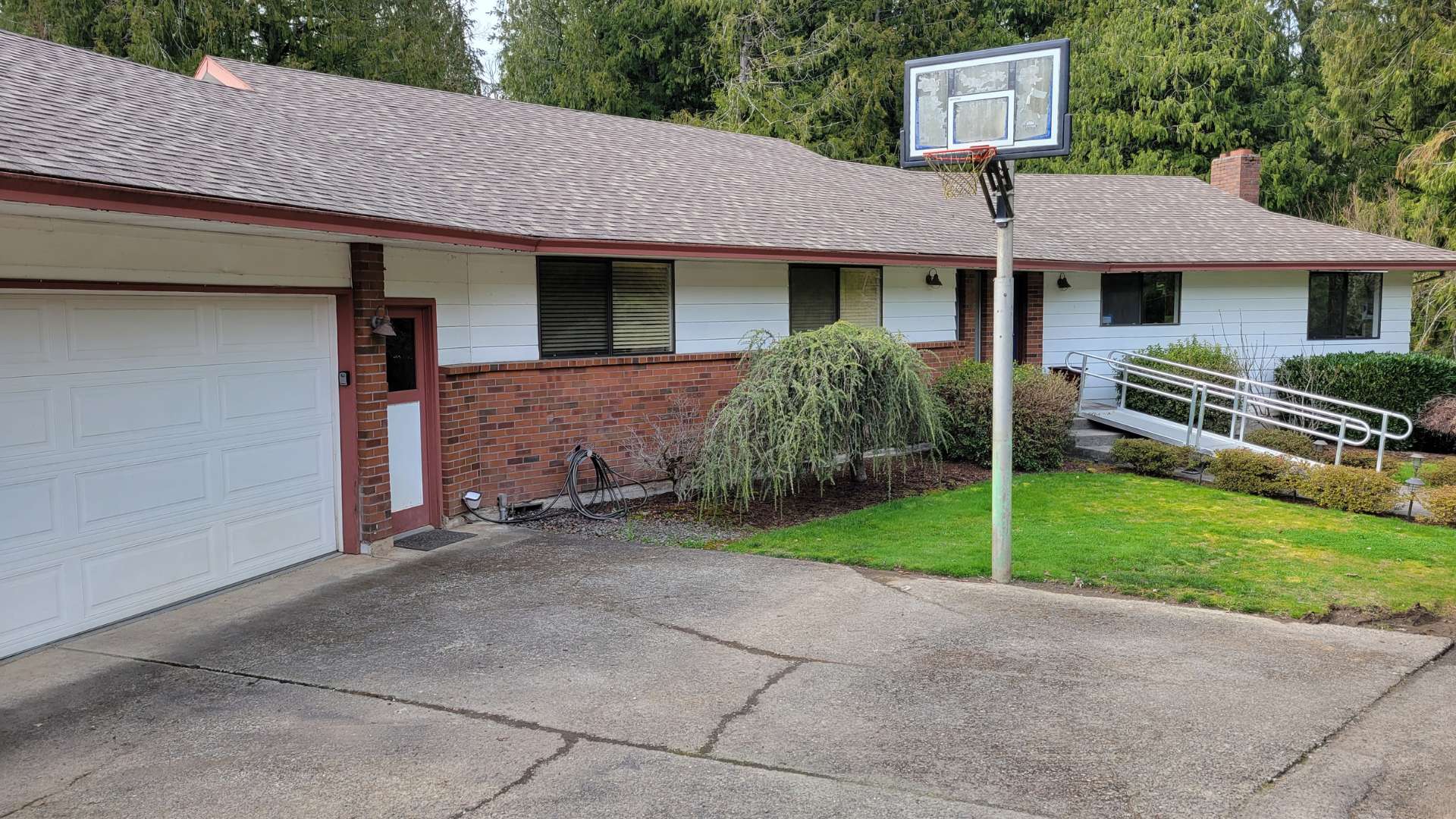What is Medical Assisted Treatment (MAT)?

Medication-assisted treatment (MAT) is a comprehensive approach to treating substance use disorders. It combines the use of FDA-approved medications with counseling and behavioral therapies. The MAT approach effectively addresses substance use disorders, particularly those related to physically addictive substances such as alcohol, prescription opioids, and illicit drugs like heroin.
MAT programs can be personalized to meet each client’s unique needs, ensuring quality and tailored care. Medications used in MAT have multiple benefits throughout the recovery process. They can ease withdrawal symptoms, reduce cravings in the early stages of care, and prevent relapse. Another approach is to remove a substance’s ability to produce a high, which aids in breaking the addiction cycle. Lastly, triggering adverse side effects when the addictive substance is consumed can discourage substance use and be an effective strategy.
Medication-assisted substance abuse treatment typically involves both individual and group counseling. Patients receiving care in certified opioid treatment programs are required by law to receive counseling, including different behavioral therapy forms. MAT counselors help you to understand the underlying causes of your addiction and start a new sober life while reducing initial discomfort and cravings during recovery. Group counseling, such as 12-step programs, provides support and solidarity with peers in recovery. This approach prevents relapse and allows you to focus on your recovery journey.
MAT was created in the 1960s to address opioid use disorder (OUD). Methadone maintenance was one of the primary methods used to treat this issue. Federally-funded treatment programs started in the 1970s, and the term “maintenance treatment” was first mentioned in the Narcotic Addict Treatment Act of 1974.
What is an Evidence-Based Medication-Assisted Treatment Practice?
Evidence-based medication-assisted treatment (MAT) is an approach supported by thorough research and evidence to help individuals overcome their dependence on opioids or alcohol effectively. MAT is crucial to preparing individuals for psychological counseling and therapy to ensure ongoing recovery, and these evidence-based treatment options are not simply substituting one drug with another.
The combination of medications, counseling, and behavioral therapies treats substance use disorders by considering the patient as a whole. This approach permits the combined treatment of physical symptoms linked to substance use or withdrawal through medication and psychological and emotional issues addressed through behavioral therapy.
Medication-Assisted Treatment for Substance Abuse
There is a greater need today for evidence-based programs that treat opioid addiction than ever before. Opioids are highly addictive, which makes recovering from opioid use disorder (OUD) particularly challenging. Fortunately, opioid addiction medications can help alleviate many of the roadblocks in the way of recovery from an OUD.
Several medications for substance use disorders have been approved by the Food and Drug Administration (FDA) to treat alcohol use disorders (AUD) and opioid use disorders (OUD), which alleviate withdrawal symptoms and psychological cravings that can cause chemical imbalances in the body.
The three approved drugs for treating opioid dependence are buprenorphine, methadone, and naltrexone. When used in combination with counseling and psychosocial support, all three treatments have proven to be safe and effective.
The use of opioid medications, particularly methadone and buprenorphine, is widely regarded as the best way to treat OUD. However, each patient may respond differently to these medications; no single medication is universally effective. Patients must have access to all three medication options to find the treatment that works best for them. Patient preference is also a significant factor when deciding on the appropriate treatment.
Given the chronic nature of OUD, ongoing medication-assisted treatment (MAT) should be evaluated periodically. There is no set limit to the duration of maintenance treatment, and some patients may require lifelong treatment.
The three approved drugs for treating alcohol use disorder (AUD) are disulfiram, acamprosate, and naltrexone. Overcoming alcohol addiction can be a difficult journey. Thankfully, MAT can significantly improve the process, especially when combined with counseling and other proven forms of treatment. This approach makes the recovery process much safer and more manageable.
What is the Difference Between Addiction Therapy and Addiction Counseling?
The terms "addiction therapy" and "addiction counseling" are sometimes used interchangeably, and it can be difficult to distinguish between them. Different professionals and treatment facilities may use varied terminology and practices. While some may use both terms interchangeably, others may make clear distinctions between the two. Nevertheless, it is worth noting some of the differences:
- Scope: Addiction therapy is a broader term encompassing various therapeutic interventions for addiction. It may include individual therapy, group therapy, family therapy, and other modalities. At the same time, substance abuse counseling specifically focuses on providing guidance, support, and education.
- Training and qualifications: Professionals providing addiction therapy and counseling are typically trained therapists or counselors specializing in addiction treatment. They have specific education, certifications, or licenses in counseling or psychotherapy. Addiction counselors, specifically, may specialize in counseling those with addiction issues.
The Department of Health and Human Services declares that in most states where substance abuse counseling licenses are available, licensed counselors must hold a master's degree, similar to that of therapists. To obtain a license, therapists and licensed substance abuse counselors must demonstrate their knowledge of effective clinical methods through study and practical training.
- Treatment settings: Addiction therapy usually occurs in residential rehab centers and outpatient clinics that offer comprehensive treatment programs, including various therapeutic services. These programs involve a team of experts from different fields. Addiction counseling can be provided in different settings like outpatient clinics, community centers, or private practices as a standalone service or as part of a more comprehensive treatment program.
- Treatment modalities: Addiction therapy can involve different therapeutic modalities, such as cognitive-behavioral therapy (CBT), dialectical behavior therapy (DBT), motivational interviewing, or psychodynamic therapy. The specific modalities used depend on the therapist's training and your needs. Addiction counseling often includes counseling techniques like supportive listening, psychoeducation, guidance, and skill-building to address addiction-related issues.
- Focus: Addiction therapy dives deeper into the underlying psychological, emotional, and behavioral factors contributing to addiction, exploring the root causes and providing a comprehensive approach to treatment. While addressing underlying factors, addiction counseling often focuses on immediate concerns related to addiction, such as developing coping strategies, managing cravings, and relapse prevention
Frequently Asked Questions (FAQ)
Insurance coverage for medication-assisted treatment for drug and alcohol addiction is available through private insurance plans and government-funded programs like Medicaid. Many private insurance plans cover substance abuse treatment, including MAT services. The extent of coverage can vary depending on the insurance provider and the specific plan, among other factors. Some plans cover some costs, while others cover the total treatment expenses.
Coverage typically includes medications for substance use disorders, such as methadone, buprenorphine, or naltrexone, as well as MAT counseling or therapy sessions. Call 866-461-3339. We can verify the details of your specific insurance benefits related to medication-assisted treatment for drug and alcohol addiction, including any deductibles, copayments, or prior authorization requirements.
Virtue Drug and Alcohol Recovery Center is in-network with many insurance companies, including Aetna, Blue Cross Blue Shield, and Cigna, and we can thoroughly review your policy for you. We can provide detailed information about your coverage, including any preauthorization requirements, co-pays, deductibles, and any limitations on the duration or type of counseling and therapy treatment covered. Your health insurance plan may cover outpatient rehab, inpatient rehab, luxury rehab, and dual diagnosis treatment.
In medication-assisted treatment (MAT), buprenorphine minimizes and controls the urge to use opioids. Buprenorphine is classified as an opioid partial agonist, producing effects comparable to other opioids but less intense, such as mild euphoria and respiratory depression. Once a moderate dose of buprenorphine is taken, its effects remain stable even if the dose is increased, known as the “ceiling effect.”
The medication’s long-lasting effects contribute to its safety in medication-assisted treatment (MAT) and minimize the risk of misuse.
Before starting opioid replacement therapy, it is essential to refrain from using opioids for 12 to 24 hours and be in the early stages of withdrawal. Patients who have opioids in their bloodstream or are not in the early stages of withdrawal may encounter acute withdrawal symptoms.
Once you’ve stopped or significantly decreased your opioid use and are no longer experiencing cravings or side effects, the dose of buprenorphine can be adjusted if necessary. Buprenorphine has a long-acting effect, so once patients are stable, they may be able to switch from daily to every other day dosing.
The duration of buprenorphine treatment is customized according to your specific needs. In certain instances, treatment may be prolonged or indefinite, depending on the situation. Continuing treatment, with or without medication-assisted treatment, is recommended to avoid potential relapse.
Medication-assisted treatment for drug addiction typically involves four primary forms of buprenorphine, which are:
- Subutex:Subutex comes in a sublingual tablet (placed under the tongue) and contains only buprenorphine. When used as directed, it can be a valuable part of an MAT program. However, taking Subutex in large amounts or injecting it can lead to potential abuse.
- Suboxone: Suboxone is used to treat opioid addiction and comes in tablet form. It contains a combination of buprenorphine and naloxone. Buprenorphine is a partial opioid agonist, while naloxone is a full opioid antagonist. This combination reduces the potential for abuse of the medication. If someone tries to take large amounts of Suboxone by injecting or consuming it, they may experience intense withdrawal symptoms due to the combination of partial and full opioid agonists.
- Probuphine: Probuphine is a medication implanted in the body that administers a low dose of buprenorphine for six months. Unlike Subutex and Suboxone, it eliminates the need for daily intake. This administration method minimizes the risk of misuse. However, if the implant is dislodged or removed, there is still a chance of intentional misuse or accidental exposure.
- Injectable Buprenorphine:This is a new medication-assisted treatment for opioids, and it functions similarly to other forms of buprenorphine but is administered through monthly subcutaneous (under the skin) injections rather than tablets or implants. This method reduces the risk of abuse and burden associated with the tablet form. Clients must complete certain requirements before starting treatment with injectable buprenorphine.
Taking buprenorphine of any kind should always be supervised by a healthcare professional. Those considering buprenorphine treatment should fully understand the drug and its side effects before taking the medication. Common side effects of buprenorphine include:
- Constipation
- Headache
- Nausea
- Vomiting
- Dizziness
- Drowsiness and fatigue
- Sweating
- Dry mouth
- Tooth decay
- Muscle aches and cramps
- Inability to sleep
- Fever
- Blurred vision or dilated pupils
- Tremors
- Palpitations
- Disturbance in attention
Suboxone is a buprenorphine and naloxone combination that strongly attaches to the same opiate receptors in the brain as other opiates, like heroin, morphine, and oxycodone. This helps reduce the effects of these drugs, prevent cravings, and allows people to transition back to a normal, safe life free from addiction.
Suboxone is an opioid use disorder treatment with milder side effects and a lower overdose risk than full agonists. However, despite its benefits, Suboxone treatment can still cause side effects. Common side effects, according to the drug manufacturer, include the following:
- Nausea
- Vomiting
- Headache
- Sweating
- Numb mouth
- Constipation
- Painful tongue
- Dizziness and fainting
- Problems with concentration
- Irregular heartbeat
- Insomnia
- Blurry vision
- Back pain
- Drowsiness
Suboxone, being a partial opioid agonist, may also cause respiratory depression, which is when breathing becomes too slow or shallow, leading to a lack of oxygen in the body. This is a serious side effect, and users experiencing it should seek medical attention immediately. Misusing or overdosing on Suboxone can increase the risk of severe respiratory depression.
Users need to be closely supervised by treatment professionals while taking this medication.
Subutex is a tablet form of buprenorphine prescribed to treat opioid addiction. Subutex tablets are typically prescribed only at the beginning of opioid addiction treatment, after which most individuals are transitioned to another medication. Subutex essentially “fools” the brain into thinking opioids are present while displacing them in the bloodstream.
Buprenorphine is a partial opioid agonist, which means it activates opioid receptors in the brain but to a lesser extent than full opioid agonists like heroin or oxycodone. When the Subutex sublingual tablet is placed under the tongue, buprenorphine is absorbed through the mucous membranes and enters the bloodstream.
Once in the bloodstream, buprenorphine binds to opioid receptors in the brain, reducing withdrawal symptoms and cravings associated with opioid addiction. It helps stabilize the brain chemistry, allowing individuals to function without experiencing the extreme highs and lows of opioid use.
Please note that this list of side effects is not exhaustive, and there may be others. Some of the typical side effects that may be experienced with Subutex include:
- Constipation
- Nausea
- Vomiting
- Headache
- Sweating
- Sleep issues
- Body pain
As with medication-assisted treatment for drug use, Subutex should be administered under the guidance of a treatment professional.
Probuphine is the first type of buprenorphine implant that helps manage opioid dependence. In a single procedure, it delivers a consistent, low-level dose of buprenorphine for six months to patients who are already on low-to-moderate doses of buprenorphine as part of their treatment program.
To receive a Probuphine implant, a 1-inch rod will be inserted through a needle into the skin of your inside upper arm. This will be done under local anesthesia, and a dose consists of four implants. After treatment, these implants must be surgically removed, as well.
Common Probuphine side effects include pain, itching, redness, swelling, bruising, and bleeding where the implants were inserted, headache, depressed mood, nausea, vomiting, constipation, back pain, tooth pain, and sore throat. This is not an exhaustive list, and you should follow a healthcare professional’s recommendations regarding care before, during, and after receiving these implants.
Methadone is a long-acting full opioid agonist and a controlled schedule II substance. It’s used to alleviate pain in patients with an official diagnosis of an opioid use disorder (OUD) by binding to and activating opioid receptors in the brain. It comes in liquid, pill, and wafer forms and is usually taken daily.
Methadone primarily targets the mu-opioid receptors responsible for producing the analgesic and euphoric effects of opioids. Methadone has a long duration of action and can sustain relief from withdrawal symptoms and cravings associated with OUD. Methadone can be a helpful component of medication-assisted treatment (MAT) if used as directed. However, since methadone is an opioid that can be abused, it must only be taken in a professional and supervised treatment setting.
The National Institute on Drug Abuse recommends a minimum of 12 months of methadone treatment. When patients are ready to stop using methadone, they should do so gradually to avoid experiencing withdrawal symptoms.
Some typical side effects that may occur from taking methadone are:
- Restlessness
- Nausea
- Vomiting
- Slowed breathing
- Itchy skin
- Heavy sweating
- Constipation
- Sexual problems
Naloxone is a medication that can quickly reverse the dangerous effects of an opioid overdose. It can be administered in various ways, including through an intranasal spray called Narcan, an injection into the muscle, or an injection under the skin. Its effects do not last long.
When naloxone is given, it temporarily binds to the opioid receptors in the brain, preventing additional opioids from binding and activating them. This helps reverse respiratory depression, which is a major cause of death during an overdose. Emergency professionals can then safely transport the person to a medical facility for further care and examination.
Naloxone is often prescribed when patients take opioid addiction medications with a risk of overdose. It can also be given to friends and family members to use in case of an emergency overdose. Naloxone is a useful medication to counteract opioid misuse. However, it is ineffective in treating overdoses resulting from benzodiazepines or stimulant drugs such as cocaine and amphetamines.
Use of naloxone causes opioid withdrawal symptoms, including, but not limited to, feeling nervous or irritable, body aches, dizziness or weakness, diarrhea, stomach pain, nausea, fever, chills, goosebumps, and sneezing or runny nose, in the absence of a cold.
Naltrexone is a medication that helps suppress cravings for opioid addiction. Unlike other opioid addiction medications, like methadone and buprenorphine, which activate opioid receptors, naltrexone works by binding to opioid receptors and blocking their effects. This not only suppresses cravings but also prevents a person from getting high if they relapse and use an opioid.
Naltrexone is a safe medication with low risks and no potential for abuse since it blocks opioid receptors instead of activating them. However, it can only be administered after complete withdrawal from all opioids or other opioid addiction medications for at least seven to fourteen days. And it should also be administered under the supervision of a healthcare professional.
While the oral formulation will also block opioid receptors, only the long-acting intramuscular injectable formulation is FDA-approved as a medication-assisted treatment for opioid use disorder (OUD).It also requires Risk Evaluation and Mitigation Strategies (REMS), which are comprehensive programs implemented by the FDA to ensure the benefits of certain medications outweigh their risks.
Common side effects include:
- Nausea
- Sleepiness
- Headache
- Dizziness
- Vomiting
- Decreased appetite
- Painful joints
- Muscle cramps
- Cold symptoms
- Trouble sleeping
- Toothache
Recovering from alcohol use disorder (AUD) can be challenging, but medication-assisted treatment for alcohol use disorder can make it safer and easier. Medication-assisted treatment (MAT) involves medication that reduces alcohol cravings and discourages alcohol use. When combined with counseling and other evidence-based therapies, MAT programs can help clients with alcohol use disorders recover.
The three most commonly used and approved drugs in medication-assisted treatment for alcohol use disorder are disulfiram, naltrexone, and acamprosate. Medications are often combined with counseling and behavioral therapies to provide a comprehensive approach. Medication-assisted therapy for AUD aims to help you or your loved one reduce alcohol intake, prevent relapse, and improve overall well-being by addressing the physiological and psychological aspects of the disorder.
Disulfiram for Alcohol Addiction
Disulfiram, also known as Antabuse, inhibits an enzyme called aldehyde dehydrogenase that breaks down alcohol, leading to unpleasant side effects and serving as a deterrent to drinking. Disulfiram is typically prescribed for those who have already undergone detoxification and are committed to staying sober.
When one consumes alcohol after disulfiram, the inhibition of the enzyme causes a build-up in the body in the form of acetaldehyde, a toxic substance. Experiencing this condition can result in unpleasant symptoms such as flushing, nausea, vomiting, headache, rapid heartbeat, dizziness, and significant discomfort.
Disulfiram should only be taken under the supervision of a healthcare professional. Adherence to the medication and abstinence from alcohol are essential, as consuming alcohol while on disulfiram can lead to severe reactions. In some cases, these reactions can be life-threatening, making it crucial to avoid any products containing alcohol, such as certain medications, mouthwashes, or even non-alcoholic beverages that have undergone fermentation.
Common Disulfiram side effects can include:
- Skin rash
- Acne
- Headache
- Sleepiness
- Impotence, loss of interest in sex
- Metallic or garlic-like taste in the mouth
Naltrexone for Alcohol Addiction
Naltrexone is a non-opioid medication that is not addictive and does not result in withdrawal symptoms upon discontinuation. It is not prone to abuse or diversion. Naltrexone works by attaching to the body’s endorphin receptors, which blocks the effects and sensations of alcohol. This reduces the urge to drink and limits the amount of alcohol consumed.
After quitting alcohol, taking naltrexone can assist patients in staying sober. The treatment period for naltrexone is typically three to four months. It is recommended to continue receiving medical attention even after completing the course of naltrexone treatment.
Naltrexone is typically administered in tablet form (ReVia and Depade) or as an injection (Vivitrol). As with all other medications, it is recommended to combine naltrexone treatment with counseling and a comprehensive recovery plan for optimal effectiveness.
The common side effects of taking naltrexone for AUD are similar to that of its use for opioid use disorder and include:
- Nausea
- Sleepiness
- Headache
- Dizziness
- Vomiting
- Decreased appetite
- Painful joints
- Muscle cramps
- Cold symptoms
- Trouble sleeping
- Toothache
Acamprosate for Alcohol Addiction
Acamprosate, known by the brand name Campral, stabilizes brain chemistry and reduces alcohol cravings. Unlike disulfiram, which causes unpleasant effects after alcohol consumption, acamprosate works by interacting with neurotransmitter systems in the brain, particularly glutamate, which plays a role in alcohol dependence, helping to restore the balance of chemicals in the brain disrupted by chronic alcohol use.
This medication is recommended for those who’ve already completed the initial withdrawal phase of recovery. Acamprosate does not help with the withdrawal symptoms when someone stops drinking alcohol. It has also not been proven effective for individuals who continue to drink or those who misuse prescription medications or street drugs while drinking heavily.
By taking acamprosate regularly, individuals with alcohol addiction may experience a reduction in their cravings and have an easier time maintaining abstinence. It supports the individual in staying alcohol-free by addressing the underlying neurochemical imbalances associated with alcohol dependence.
Side effects of acamprosate are generally mild and can include diarrhea, nausea, sweating, dry mouth, and changes in appetite. It is important to take as directed under the supervision of a healthcare provider.
If you have a health insurance plan with one of the providers listed below, you can read our guide to find out if your coverage includes drug and alcohol therapy treatment.
- Does Aetna Cover MAT Programs?
- Does Baylor Scott & White Cover MAT Programs?
- Does Blue Cross Blue Shield Cover MAT Programs?
- Does Cigna Cover MAT Programs?
- Does HealthSmart Cover MAT Programs?
- Does Magellan Cover MAT Programs?
- Does Medicaid Cover MAT Programs?
- Does MultiPlan Cover MAT Programs?
- Does OWCP Cover MAT Programs?
- Does TriWest Cover Treatment?
- Does United Healthcare Cover Treatment?
Treatment Programs
Admission
"*" indicates required fields















